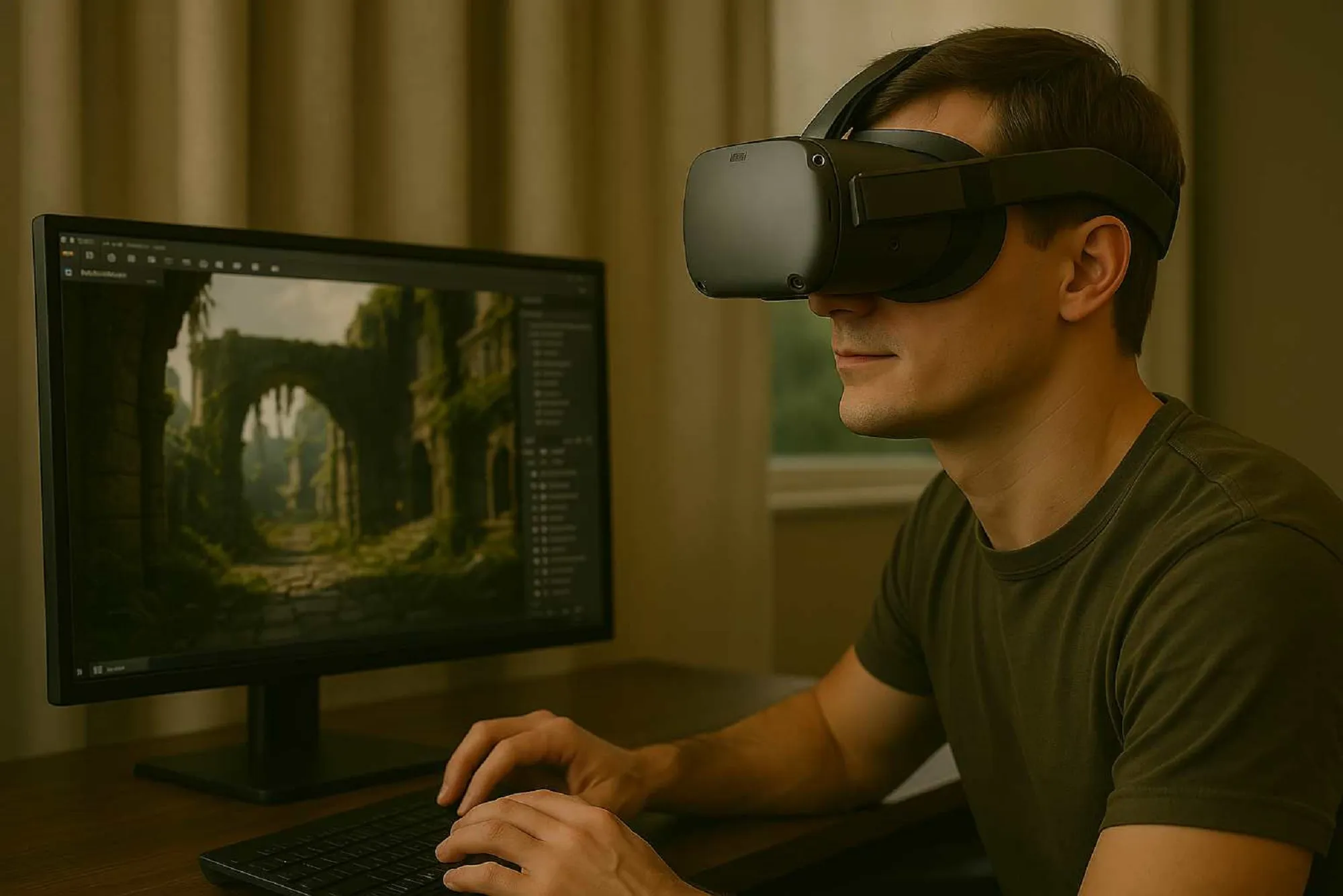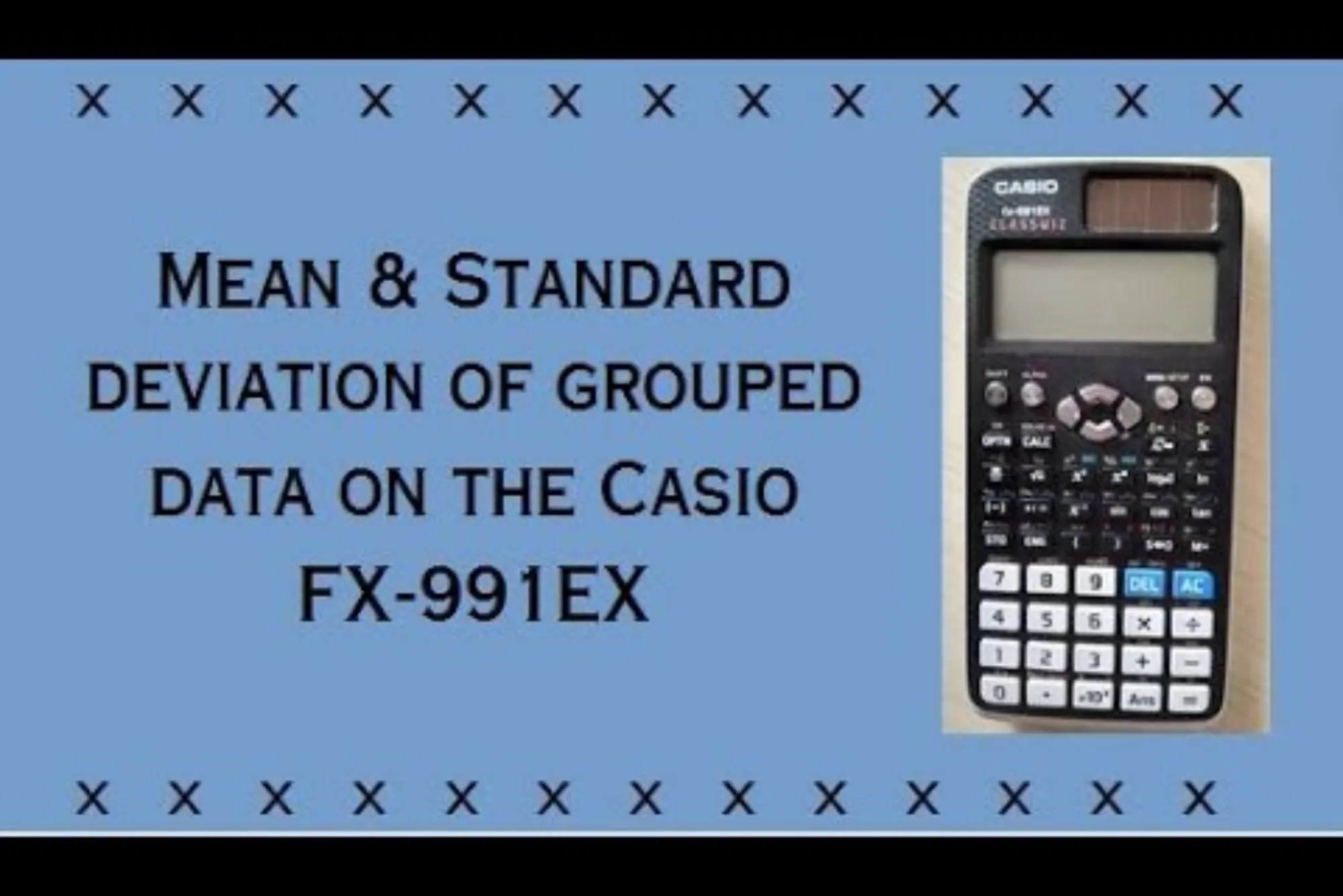In the rapidly evolving world of gaming, virtual reality (VR) stands as a beacon of innovation. The dynamic realm of VR has revolutionized how players interact with digital environments, offering immersive experiences that were once considered the realm of science fiction. As studios and startups step into the world of VR, finding the right development partner becomes paramount. Crafting a comprehensive Request for Proposal (RFP) is the first step in ensuring a successful partnership. This article provides a detailed checklist for crafting an effective RFP, specifically tailored for those seeking to hire VR game development company professionals, with a focus on the burgeoning metaverse.
Understanding the VR Game Development Landscape
Before we get into the details of a Request for Proposal (RFP), it’s important to grasp the world of VR game development. Many VR game companies are popping up, especially in tech-focused areas like India. It’s vital to find a partner that matches your goals and technical requirements. These companies provide various services, from designing ideas to complete production, using the latest technology to create immersive virtual experiences.
Global Expansion and Market Trends
The VR game development industry is experiencing global expansion, with new studios appearing in diverse regions. Understanding market trends is vital for selecting a development partner. Current trends include the integration of AI in VR, the rise of social VR platforms, and the increasing demand for cross-platform compatibility. By staying informed about these trends, you can better assess which companies are at the forefront of innovation.
Regional Expertise and Specializations
Different regions boast unique strengths in VR development. For instance, North America and Europe are known for their technological innovation, while Asia offers cost-effective solutions with highly skilled labor. Understanding these regional specializations can help you choose a partner whose expertise aligns with your project needs. Additionally, some studios specialize in particular genres or technologies, such as multiplayer online games or augmented reality (AR) integration.
Technological Advancements in VR
The VR industry is continually evolving with technological advancements. From haptic feedback systems that enhance user immersion to cloud-based VR solutions that improve accessibility, staying abreast of these innovations is crucial. When crafting your RFP, consider how these technologies can enhance your project and seek partners who are adept at implementing them. This approach ensures your game leverages the latest advancements to deliver a cutting-edge experience.
India’s Growing Role in the VR Development Ecosystem
India has become a significant player in the global VR development ecosystem, offering a blend of affordability, technical expertise, and innovation. With a strong pool of skilled developers and artists, Virtual reality companies in India are increasingly being chosen for complex VR projects across gaming, training, and simulation domains. Major tech hubs like Bangalore, Hyderabad, and Pune host a growing number of VR-focused companies that specialize in building immersive, cross-platform experiences. These firms are adept at utilizing modern engines like Unity and Unreal, and many are experienced in integrating advanced features such as multiplayer functionality, haptics, and AI-driven interactions. As the demand for VR content rises globally, Indian studios are proving to be reliable partners for delivering high-quality, scalable solutions within tight development cycles.
Key Elements of an RFP for VR Game Development
1. Project Overview
Begin with a comprehensive project overview. This section should succinctly define your project, including the scope, objectives, and desired outcomes. Clearly state whether your focus is on creating an immersive VR game or integrating VR elements into an existing platform. Mention the importance of metaverse compatibility, if applicable, as this can dictate specific technical requirements.
Defining Your Vision and Goals
Clearly articulating your vision and goals is fundamental in the project overview. Describe the core concept of your game, its unique selling points, and the impact you aim to achieve in the market. Whether your goal is to create a novel gaming experience or to educate players through interactive storytelling, a well-defined vision helps potential partners grasp the essence of your project.
Identifying Target Platforms
Specify the platforms you intend to target, such as Oculus Quest, PlayStation VR, or HTC Vive. Each platform has its own technical requirements and audience demographics, which influence development strategies. By identifying your target platforms early on, you guide potential partners in understanding the technological scope and market positioning of your project.
Emphasizing Metaverse Integration
If metaverse integration is a priority, highlight how your game will interact with existing metaverse ecosystems. Discuss potential collaborations with other developers or platforms to create a cohesive virtual universe. This focus on interoperability ensures your game not only stands alone but also contributes to the broader metaverse landscape.
2. Company Background
Provide potential partners with insight into your company. Include your mission, core values, and any relevant history with VR or gaming projects. This context helps development studios understand your vision and align their services accordingly.
Highlighting Past Achievements
When detailing your company background, emphasize past achievements in the gaming or VR industry. Showcase successful projects, awards, or recognition that illustrate your expertise and credibility. This track record reassures potential partners of your capability to deliver on ambitious projects and fosters confidence in your leadership.
Articulating Mission and Values
Clearly articulate your company’s mission and core values to convey your long-term objectives and ethical standards. Whether your focus is on innovation, user engagement, or social impact, these guiding principles play a crucial role in attracting partners who share your vision and are committed to similar goals.
Building a Collaborative Culture
Describe your company culture and approach to collaboration. Highlight any unique practices, such as agile development methodologies or open communication channels, that facilitate effective partnerships. A strong collaborative culture ensures smooth interactions with development studios and contributes to a productive working relationship.
3. Technical Requirements
Outline the technical specifications and requirements for the project. This might include preferred development platforms (such as Unity or Unreal Engine), hardware specifications, and any specific VR headsets or controllers to be supported. Additionally, detail any integration needs with existing systems or platforms, particularly if you are building within the metaverse.
Specifying Development Tools
Detail the development tools and software you expect to be used, such as game engines, 3D modeling software, and version control systems. Clarifying your preferences for tools like Unity or Unreal Engine helps partners assess their technical fit and ensures consistency in development processes.
Addressing Hardware Considerations
Identify the hardware specifications necessary for your project, including VR headsets, motion controllers, and PCs or consoles. Consider factors like processing power, display resolution, and tracking capabilities to ensure optimal performance. By specifying hardware requirements, you guide partners in designing experiences that are both immersive and accessible.
Ensuring System Integrations
Discuss any system integrations required, such as APIs, third-party services, or existing software platforms. Whether you need cloud-based services for multiplayer functionality or analytics tools for user insights, clear integration requirements help partners plan technical workflows and ensure seamless operation.
4. Game Design and Narrative
Dive into the creative aspects of your project. Describe the core gameplay mechanics, target audience, and narrative style. If your game involves complex storylines or unique game mechanics, ensure these are clearly communicated. This section sets the foundation for the creative direction and helps potential partners gauge their compatibility with your vision.
Crafting Engaging Gameplay
Elaborate on the core gameplay mechanics that define the player’s experience. Discuss how these mechanics contribute to the overall engagement and challenge of the game. Whether your game focuses on exploration, strategy, or social interaction, a clear explanation of gameplay elements aids partners in aligning their creative input.
Defining the Target Audience
Identify your target audience, considering demographics, preferences, and gaming habits. Understanding the audience helps partners tailor design and narrative elements to resonate with the intended players. This focus on audience engagement ensures the final product appeals to and captivates the desired market.
Developing Compelling Storylines
Explore the narrative structure and storytelling techniques employed in your game. Whether your story unfolds through linear progression or branching paths, articulate how the narrative enhances the gaming experience. A compelling storyline not only captivates players but also provides depth and context to gameplay mechanics.
5. Budget and Timeline
Clearly state your budgetary constraints and project timeline. Transparency in financials and deadlines is crucial to finding a partner who can deliver within your expectations. Outline any phases of development, such as prototyping, alpha and beta testing, and final release, along with associated timelines.
Establishing Financial Parameters
Set clear financial parameters by outlining your budget range and allocation for different project phases. Detail costs associated with development, marketing, and post-launch support. A transparent budget helps partners propose realistic solutions and ensures financial feasibility throughout the project lifecycle.
Structuring Development Phases
Break down the project into distinct development phases, such as concept design, prototyping, and testing. Assign timelines and milestones to each phase to track progress and maintain accountability. This structured approach facilitates project management and ensures timely delivery of the final product.
Planning for Post-Launch Support
Consider post-launch support and maintenance requirements in your timeline and budget. Discuss ongoing updates, bug fixes, and user support necessary to sustain the game after release. Adequate planning for post-launch activities enhances the game’s longevity and user satisfaction.
6. Evaluation Criteria
Define how you will evaluate proposals. Will you prioritize technical expertise, past experience with similar projects, or innovative design solutions? Specify any mandatory qualifications, such as experience with metaverse projects or familiarity with specific VR technologies.
Prioritizing Technical Expertise
Emphasize the importance of technical expertise in evaluating proposals. Assess partners’ proficiency in relevant technologies, such as game engines, VR systems, and programming languages. By prioritizing technical skills, you ensure the chosen partner can effectively execute your project’s complex requirements.
Assessing Past Experience
Examine partners’ past experience with similar projects or genres. Review case studies and portfolios to gauge their ability to deliver quality results. Experience with projects of similar scale and complexity indicates a partner’s capability to navigate challenges and achieve desired outcomes.
Valuing Innovative Solutions
Value innovative design solutions that push the boundaries of traditional VR experiences. Encourage partners to propose creative approaches that enhance gameplay and user engagement. By fostering innovation, you position your project at the forefront of the industry and deliver unique experiences to players.
7. Submission Guidelines
Provide detailed instructions for proposal submissions. Include deadlines, preferred formats, and any additional materials you require, such as case studies or client testimonials. Clarity in this section ensures that you receive proposals that meet your standards and facilitate a smooth evaluation process.
Setting Clear Deadlines
Establish clear deadlines for proposal submissions to manage the selection process effectively. Communicate these timelines to potential partners and ensure they align with your project schedule. Adhering to deadlines facilitates timely evaluation and decision-making.
Specifying Submission Formats
Specify the preferred formats for proposal submissions, whether digital documents, presentations, or video pitches. Clear format guidelines streamline the review process and ensure consistency in evaluating different proposals. By standardizing formats, you facilitate a fair and organized assessment.
Requesting Supplementary Materials
Request supplementary materials, such as case studies, client testimonials, or technical documentation, to support proposals. These materials provide additional insights into partners’ capabilities and past successes. Including supplementary materials in your evaluation criteria enriches the decision-making process and strengthens your final choice.
Additional Considerations
Metaverse Integration
As the concept of the metaverse gains traction, consider how your VR game will fit into this expanding digital universe. Specify if you require interoperability with metaverse platforms, and detail any standards or protocols that must be adhered to. This can include avatar compatibility, cross-platform play, and persistent virtual environments.
Embracing Interoperability
Highlight the need for interoperability with existing metaverse platforms. Discuss how your game will integrate with these ecosystems, supporting features like cross-platform play and persistent environments. By embracing interoperability, your game can become part of a larger virtual universe, enhancing its appeal and longevity.
Adhering to Standards and Protocols
Outline the standards and protocols necessary for metaverse integration. Specify requirements for avatar compatibility, asset sharing, and communication protocols to ensure seamless interactions within the metaverse. Adhering to established standards fosters collaboration and consistency across different metaverse platforms.
Exploring Collaborative Opportunities
Consider collaborative opportunities with other metaverse developers or platforms. Discuss potential partnerships or joint ventures to create a cohesive virtual world. Collaborative efforts can expand your game’s reach and establish a presence within the broader metaverse landscape.
Legal and Compliance
Address any legal considerations, such as intellectual property rights, data privacy, and compliance with industry standards. Clearly state your expectations regarding the ownership of developed content and any ongoing support or maintenance agreements.
Protecting Intellectual Property
Clarify intellectual property rights and ownership of developed content. Ensure agreements protect your creative assets and outline terms for licensing or transferring rights. Protecting intellectual property safeguards your project’s unique elements and prevents unauthorized use.
Ensuring Data Privacy and Security
Outline data privacy and security measures to protect user information and comply with regulations. Discuss data collection, storage, and protection practices to reassure partners and users. Compliance with data privacy standards fosters trust and mitigates legal risks.
Defining Support and Maintenance Terms
Detail ongoing support and maintenance agreements, including responsibilities for bug fixes, updates, and user support. Establish clear terms for post-launch activities to ensure continued project success. Well-defined support agreements enhance user satisfaction and game longevity.
Conclusion
Crafting a comprehensive RFP is a critical step in securing the right VR game development partner. By clearly outlining your project’s vision, technical needs, and creative aspirations, you pave the way for a collaborative and successful partnership. As the world of VR continues to expand, particularly within the context of the metaverse, having a structured approach to finding development partners will ensure your project stands out in this competitive landscape.
By following this checklist, studios and startups can navigate the complexities of hiring VR partners with confidence, ultimately leading to the creation of engaging, immersive virtual experiences that captivate audiences and push the boundaries of what is possible in gaming.
In an industry where innovation is the key to success, a well-prepared RFP not only attracts top-tier development talent but also sets the stage for groundbreaking VR experiences that resonate with players and redefine the gaming landscape. By prioritizing clarity and detail in your RFP, you ensure that your project aligns with the right partners and achieves its fullest potential.




